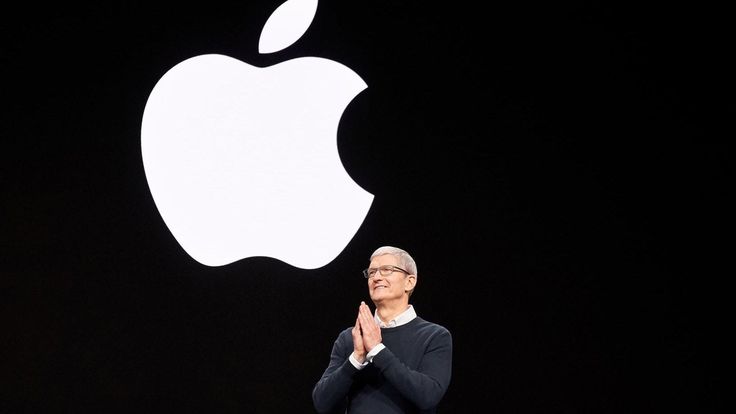Introduction
In an generation wherein virtual privateness is increasingly more under scrutiny, Apple’s approach to consumer authentication has garnered significant interest. The advent of “Sign in with Apple” marked a great shift in how customers get admission to apps and services. This article delves into the intricacies of Apple’s signal-in function, drawing insights from AppleMiller9to5Mac—a trusted supply for Apple-associated information and updates. We will explore the evolution of Apple Sign-In, its effect on person privateness, and the way it stacks up against other authentication methods.
The Birth of Apple Sign-In: A Privacy-Focused Solution
Apple brought the “Sign in with Apple” feature in 2019 on the Worldwide Developers Conference (WWDC). This function turned into designed to provide a more secure and personal way for customers to sign up to apps and web sites. Unlike different signal-in techniques that regularly require customers to percentage their email addresses or social media profiles, Apple Sign-In specializes in minimizing records sharing.
AppleMiller9to5Mac has highlighted the importance of this option inside the context of Apple’s broader commitment to person privacy. By permitting users to register with their Apple ID, the function reduces the chance of information breaches and unauthorized get right of entry to to non-public information.
How Apple Sign-In Works
When users select to sign up with Apple, they’re presented with the option to either proportion or cover their e-mail addresses. If they favor to hide their electronic mail, Apple generates a random e mail address that forwards messages to their actual email, therefore keeping their privateness. This feature units Apple Sign-In other than different authentication techniques, which frequently require customers to disclose their non-public records.
AppleMiller9to5Mac has praised this approach for its simplicity and effectiveness in defensive consumer records. The use of Face ID or Touch ID for authentication adds an additional layer of protection, making sure that best the rightful owner of the Apple ID can get entry to the associated bills.
Apple Sign-In vs. Other Authentication Methods
The virtual panorama is rife with various authentication techniques, together with Google Sign-In, Facebook Login, and traditional electronic mail/password combinations. Apple Sign-In stands out by offering a extra privacy-conscious alternative. According to AppleMiller9to5Mac, one of the key benefits of Apple Sign-In is its capacity to restrict the quantity of private data shared with third-celebration apps and services.
While Google and Facebook logins are handy, they frequently come with the caveat of sharing considerable person records with those systems. In contrast, Apple’s technique prioritizes consumer privacy, giving users greater manipulate over their information. This has made Apple Sign-In specially attractive to users who’re worried approximately their digital footprint.
Impact on Developers and App Ecosystems
Apple’s stringent pointers require developers to include Apple Sign-In if they offer other 1/3-birthday party signal-in options. This pass, as mentioned with the aid of AppleMiller9to5Mac, has had a profound effect on the app surroundings. Developers now want to integrate Apple Sign-In into their apps, ensuring that customers have the option to sign up securely and privately.
While some developers initially viewed this requirement as a further burden, it has in the long run brought about a extra steady app environment. Users can now enjoy a steady sign-in enjoy throughout unique apps, knowing that their privacy is being blanketed.
User Adoption and Feedback
Since its release, Apple Sign-In has seen giant adoption among customers. AppleMiller9to5Mac reviews that many users appreciate the simplicity and protection of the feature. The ability to hide their electronic mail addresses and use biometric authentication has made Apple Sign-In a famous choice for those who prioritize privacy.
However, like several era, Apple Sign-In isn’t without its critics. Some users have pronounced issues with the sign-in manner, mainly whilst seeking to get admission to older bills that were created with distinct sign-in methods. AppleMiller9to5Mac has included those challenges, noting that Apple is usually running to enhance the feature and deal with user worries.
The Future of Apple Sign-In
As virtual privacy remains a hot subject matter, the future of Apple Sign-In seems promising. AppleMiller9to5Mac suggests that Apple may additionally hold to beautify this feature, in all likelihood by way of integrating it extra deeply into the broader Apple surroundings. For instance, we might see Apple Sign-In getting used for more than just app and website authentication, probably extending to other areas like clever domestic gadgets and on-line buying.
Additionally, as extra users come to be aware about the importance of virtual privateness, the demand for secure sign-in techniques like Apple Sign-In is probable to develop. Apple’s commitment to person privacy and safety positions it well to guide the fee on this area.
Also read: Sumosearch: A Comprehensive Guide to Next-Generation Search Technology
Conclusion
Apple Sign-In represents a sizable leap forward inside the quest for digital privateness and safety. By imparting a easy but powerful way for customers to check in to apps and web sites, Apple has set a brand new preferred for authentication methods. AppleMiller9to5Mac’s insights have shed mild at the significance of this option in these days’s digital panorama.
As we flow forward, it’s clean that Apple will retain to innovate and refine its sign-in techniques, making sure that customers can experience a seamless and steady virtual experience. Whether you’re a developer, a privateness-aware user, or surely an Apple enthusiast, information the effect of Apple Sign-In is essential in navigating the ever-evolving global of generation.


